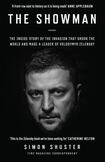
The full-scale war that erupted between Ukraine and Russia two years ago was supposed to be a walkover.
Ukraine had forfeited Crimea without a fight when the Kremlin occupied it in spring 2014, and then lost much of its industrial heartland in the eastern Donbas region to militia groups funded and armed by Moscow. Now Ukraine wanted to join the European Union and Nato, but western powers were not going to defend it, or even fulfil the security pledges they made when Kyiv agreed to transfer its nuclear arsenal to Russia after the collapse of the Soviet Union in 1991.
Russia, by contrast, was a nuclear power of 140 million people spread across about one-10th of Earth’s landmass, with vast reserves of oil, gas and metals, and a military with a million soldiers under arms and was reputedly the second-strongest in the world. Now it was ready to use overwhelming force to punish and tame a disobedient neighbour.
The apparent mismatch ran right to the top: in the Kremlin sat Vladimir Putin, ex-KGB operative and former head of its post-Soviet successor, the FSB, who had ruled Russia for two decades in a style that had only become more brutal and authoritarian over time.
READ MORE
In Kyiv’s corner stood Volodymyr Zelenskiy, an erstwhile comedian whose only link to politics before running for office in 2019 was playing the role of a schoolteacher pitched by fate into becoming Ukraine’s president. By February 2022, as Russian troops massed on his country’s border, he was widely seen as ineffectual and out of his depth as its real-life leader
[ Contrasting New Year speeches from Putin and ZelenskiyOpens in new window ]
In The Showman, Simon Shuster chronicles from close quarters how Zelenskiy helped to flip the script using skills honed during his former life as an entertainer, and by tapping reserves of bravery and determination that no one – perhaps not even the man himself – could have known existed before he was tested by war.
As a correspondent for Time magazine, Shuster spent long periods with Zelenskiy and his team in the bunker under the presidential administration in central Kyiv, on slow train rides across wartime Ukraine, and during his visits to troops on the frontline.
The result is a compelling portrait of a man who has confounded Putin and whatever pre-invasion predictions he received from his intelligence agencies, just as his compatriots have smashed holes in the reputation of Russia’s military and shredded Kremlin expectations that its troops would be welcomed by Ukrainians as their saviours from a decadent West.
In the first days of Russia’s full invasion, when it became clear that Putin wanted to occupy Ukraine and install a puppet government, western capitals also seemed to expect Zelenskiy gather up his wife and two young children and flee the country.
Shuster captures some of the tension in the presidential bunker as reports come in of Russian hit squads aiming to capture or kill Zelenskiy, and amid the fierce battle for Hostomel airport, on the outskirts of Kyiv, where Moscow sought to land thousands of crack paratroopers and establish a base from which to seize the capital.
Ukraine routed Russia’s troops at Hostomel and Zelenskiy showed his people and the world that he was going nowhere, filming the first of what would become daily videos on his mobile phone to lift morale at home and rally crucial support from international allies.
[ Ukraine discusses ‘peace formula’ at Davos meeting as Kremlin calls plans absurdOpens in new window ]
[ Well-known German journalist sponsored by oligarch to write about PutinOpens in new window ]
Zelenskiy’s refusal to leave – coming just months after western-backed Afghan leader Ashraf Ghani fled Kabul and a vast US arms cache fell into Taliban hands – not only stiffened the resolve of Ukrainians at all levels to defend their country, but placed a moral imperative on western leaders to commit to supporting Kyiv “for as long as it takes”.
Shuster describes how Zelenskiy and his core team – many of whom share his media and entertainment background – realised almost instinctively the need to make the defence of Ukraine a compelling story for the West, which would engage millions of people in the progress of the war and translate into pressure on western governments to stay the course.
As Ukraine stood firm, so Zelenskiy’s confidence in military decision-making increased, but so did tension with his top army commander, Valery Zaluzhnyi.
The two men apparently disagreed on pre-war actions – with Zaluzhnyi favouring more overt military preparations for invasion and Zelenskiy preferring to play down the Russian threat to prevent panic – and also on the focus of Ukraine’s successful late-2022 counteroffensive in Kharkiv and Kherson regions.
Historians will debate the merits of their positions, but Shuster’s account will be hard to beat for its closeness to Zelenskiy during this momentous time for Ukraine and Europe.













